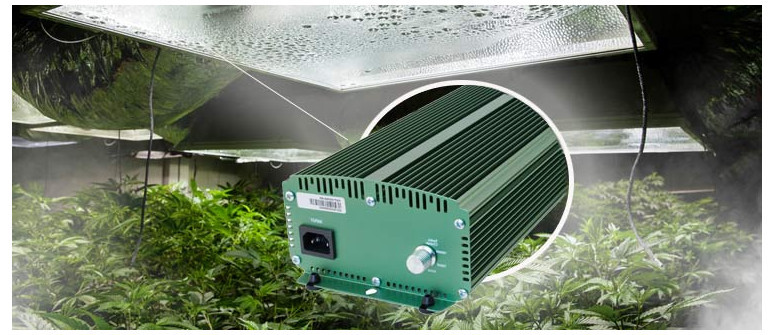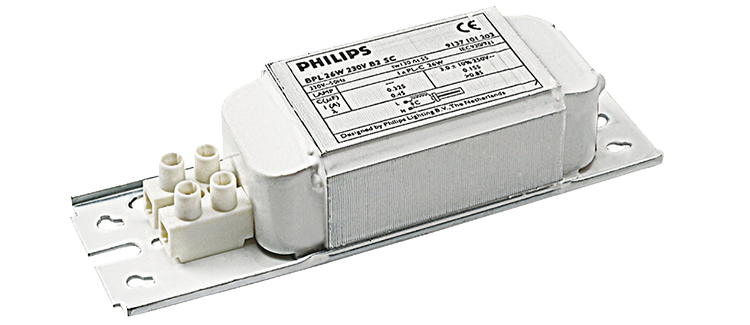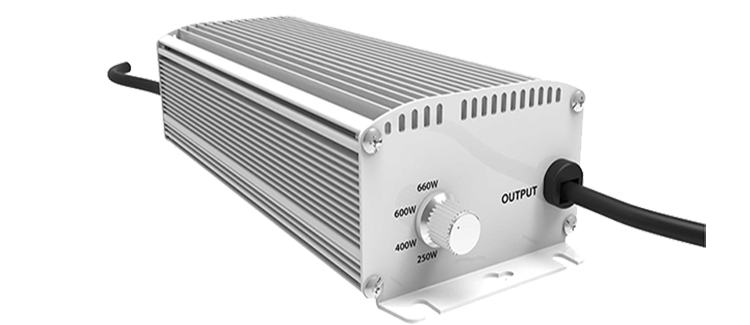All about ballasts for cannabis grow lights

The high intensity discharge lighting systems used for growing cannabis indoors require ballasts to function properly. Just what are ballasts and why are they needed?
Ballasts are an integral part of HID lighting setups for indoor growing. Unlike fluorescent battens or CFLs, high intensity discharge lights like HPS or MH (CMH) can’t just be plugged into the wall socket. In an effort to save money, you could try, but the globe arcs would not ignite. Then, the charge buildup while you wait for something to happen would probably burn your house down.
Ballasts regulate the current, and supply enough initial voltage to start the globes and maintain the operational arc. HID globes are types of arc lamps that use the chemical compounds inside the tubes to produce sun-like spectrums. The ballasts ensure the correct current at all times, and dissipate voltage irregularities as heat.
Ballasts come in two styles. The originals are magnetic ballasts, and the more modern versions are digital or electronic ballasts.
MAGNETIC BALLASTS

Magnetic ballasts have been around since the invention of HID-style lighting. The main advantage of magnetic ballasts is their price. They also extend the life of globes, as their output is lower compared to their contemporary cousins.
The main disadvantages are they produce substantial amounts of heat and can’t have their voltages adjusted. They are heavy and tend to vibrate and hum, which needs to be considered when doing a stealth grow.
Magnetic ballasts are single-purpose and not interchangeable. A 400W ballast must be used for a 400W globe, 600W for 600W, etc.
DIGITAL/ELECTRONIC BALLASTS

Digital or electronic ballasts are overall more efficient, but are more expensive initially. However, this expense is relative as power usage is less per lumen generated. Digital ballasts get up to 30% more light from the globes and broader spectral output.
They are multi-use; a single ballast can be used for different wattages of lamps. They don’t give off anywhere near the heat of magnetic ones, and are substantially lighter than those types as well.
Many electronic ballasts have voltage selectors so the light intensity can be adjusted. This is advantageous when trying to keep a grow room cooler during the hottest months.
They do give off radio frequency interference (RFI), which can disrupt televisions and may get you busted. The RFI is noticeable by the law with a simple apparatus that will detect the ballast in a drive-by investigation.
DO OTHER LIGHT TYPES HAVE BALLASTS?
Other types of lighting do have ballasts, but they are usually integrated into the system.
Fluorescent battens have a ballast. Often called an igniter or starter, they provide the initial charge to spark the fluorescent chemicals inside the tubes. Similarly, CFLs have ballasts built into the light itself, so they are easy to interchange without having to fool around with other parts.
LED lighting systems also have ballasts, known as drivers. These are battery-like components filled with an electrolytic gel. They convert high-voltage AC power to low-voltage DC power, regulating the available current to maximise light efficiency. This gel evaporates with heat over time. It is usually a driver failure that stops an LED system from functioning, rather than globe failures.
WARNING
Magnetic ballasts can get hot. They are the main heat producer when using HID lamps. It is best, when possible, to keep magnetic ballasts outside the grow space to help with temperature control. Never cover a magnetic ballast, and always make sure they are well-ventilated. Keep them clean—dust and lint can cause fires.
Like any high-voltage equipment, be careful with ballasts. There is always a risk of electrocution when the equipment is not respected. Always unplug the ballast before handling, and do not poke around at it with a screwdriver while the unit is live.
OUR ADVICE
Always remember to install all electrical devices above waist-line and secure every possible cable to the walls/ceiling.
Never keep a ballast directly on the floor! It is a fire hazard waiting for an accident. You want to avoid damaging your electric line or even starting up a fire in case of a water spill. First of of: play safe, secondly have fun!




